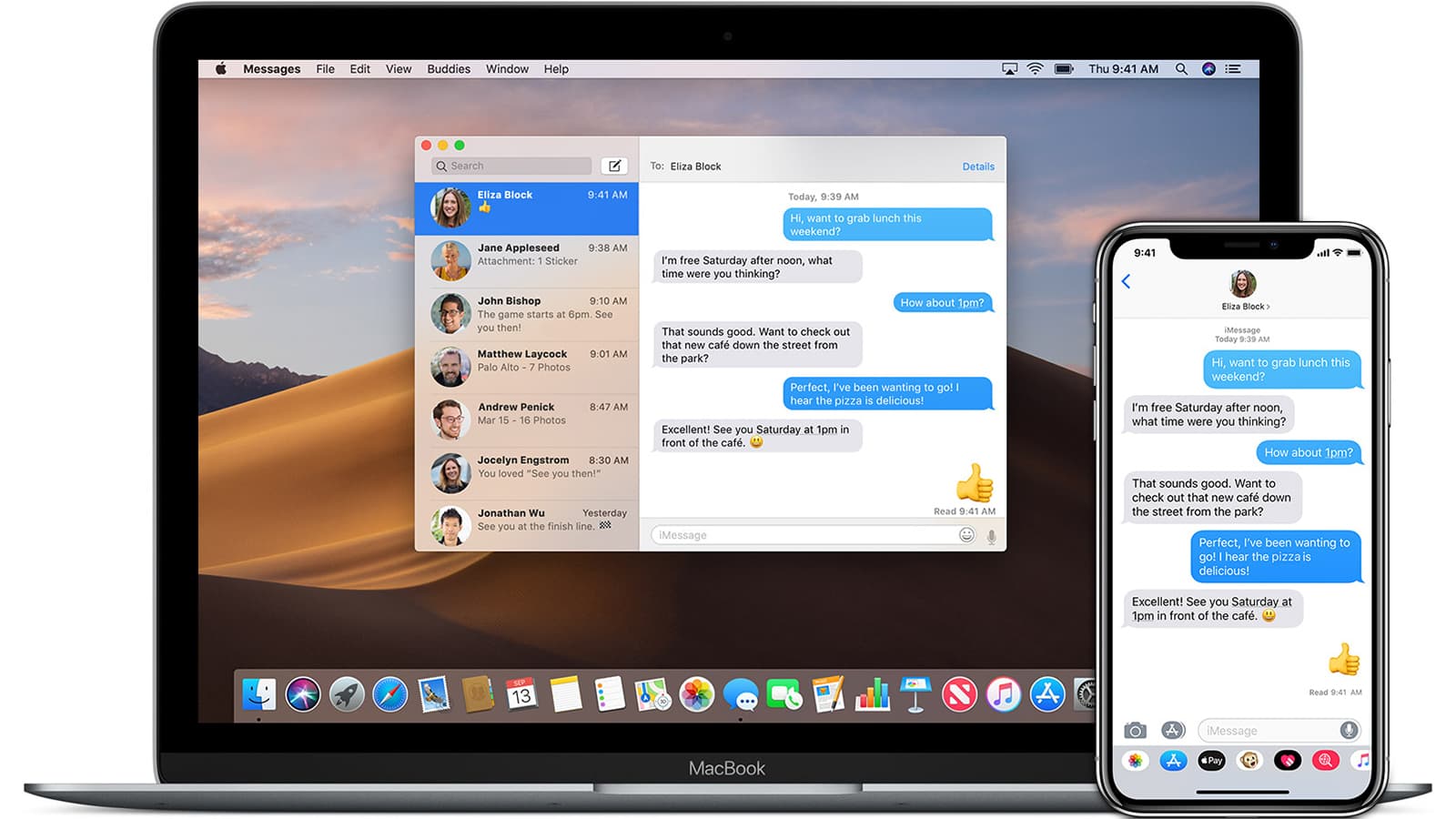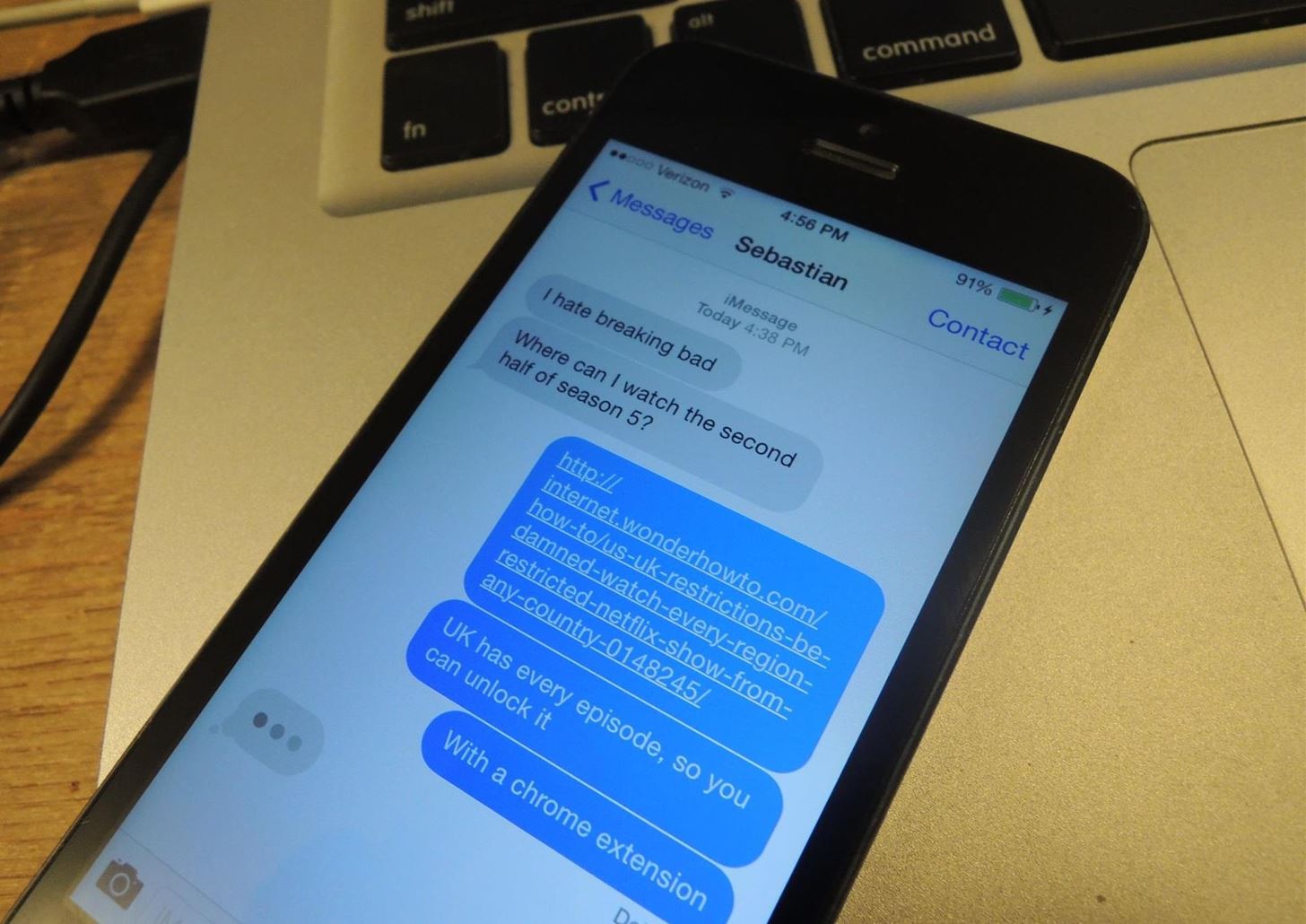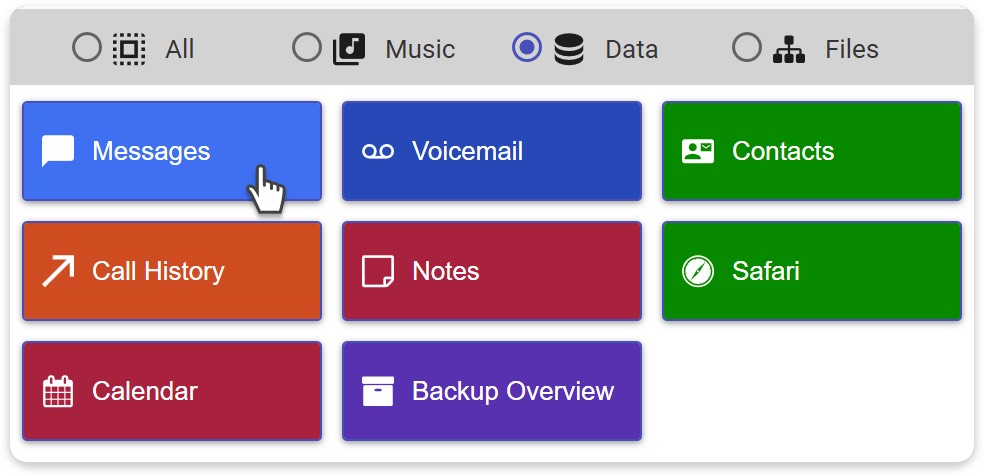Bring all messengers into one
This could be the easiest and safest way to view iPhone text messages on PC or Mac. Now, let's have a brief look on the key features of iPhone SMS Exporter: Preview detailed text conversation on PC before exporting as you like. Go to my pc download for mac. Export and backup iPhone text messages in 4 different formats, including HTML, CSV, Text, DB.
- Messages is the text-messaging software included with your Mac. Use it to send messages with iMessage, or to send SMS and MMS messages through your iPhone. With Messages for Mac, you can send unlimited messages to any Mac, iPhone, iPad, or iPod touch that uses iMessage, Apple's secure-messaging service. IPhone owners can use it for SMS and MMS.
- Part 1: Turning on Text Message Forwarding on Mac. The very first thing that you need to do for you to get text messages on Mac is that you have to enable the text message forwarding feature on your Mac. And for you to do so, here is what you will be needing to do.
Text messaging is so ingrained into our days that it’d be difficult to imagine our lives without it. One can say texting is the perfect form of non-disruptive, asynchronous communication, since you only participate in it when convenient for you, as opposed to other real-time alternatives like calling.
Eventually, simple text messages (SMS) evolved to incorporate images and audio (MMS). In the meantime, the use of instant messaging (IM) software online, with AIM and Windows Live, was growing rapidly as well. Those two words collided and essentially merged with each other with the release of the iPhone.
Right now, most of us use at least a few messaging apps: Facebook Messenger, WhatsApp, Instagram, Telegram, Skype, Snapchat, etc. Apple’s own iMessage, both on iPhone and Mac, remains wildly popular too, as well as regular text messaging. But, with so many services, how much data do we generate? And what’s the best way to keep all this data private?
Safest way to delete messages
Install Setapp on Mac to keep your data safe. Get backup apps, data recovery tools, and more to always stay on the safe side.
Why Delete iMessage History On Mac?
First of all, the most secure way to ensure your conversations stay private on your devices is to only use apps that allow for end-to-end encryption, which prevents anyone (including the service provider) from eavesdropping on anything you say. Apps such as WhatsApp, Telegram, Signal, and iMessage are already using end-to-end encryption to protect your privacy.
Second, it’s better to be safe than sorry. Even with end-to-end encryption in place, someone who takes possession of your phone can read anything you’ve sent or received. That’s where knowing how to delete all messages on Mac or iPhone regularly can help. Let’s go through a somewhat comprehensive checklist for keeping your iMessage history clean from any unwanted correspondence.
How to enable iMessage across devices
As you know, regular text messages and iMessages share the same Messages app on your iPhone. One of the advantages of using iMessage then is not only getting the secure end-to-end encryption but also being able to use it across devices — on your Mac, for example.
Get Text Messages On Mac

To turn on iMessage on your Mac:
Open the Applications folder (⌘ + Shift + A) and launch the Messages app
Go to Preferences (⌘ + ,) and switch to the iMessage tab
Check “Enable this account” and “Enable Messages in iCloud”
Click Sync Now
Now your iMessages will synchronize on your Mac and iPhone, so you can read and reply to any text from either device. Additionally, you can check the boxes in the “You can be reached for messages at” menu if you want to allow people to text you just by knowing your email.
If you’re wondering how to turn off iMessage on Mac at any time, simply uncheck the “Enable Messages in iCloud” option.
How to delete iMessages on Mac
To keep your conversations private, iMessage has a simple way for how to delete messages on Mac. You can use this method to delete either yours or someone else’s messages:
Open any conversation within your Messages app
Find a message you want to delete, right-click on it, and select Delete…
Click Delete to confirm
Note: When you delete an iMessage on Mac, it only removes the message on your side. The recipient will still see all the messages on their devices.

How to delete multiple messages on Mac
While knowing how to delete text messages on Mac is crucial to being able to occasionally hide sensitive data, sometimes you might want to find out how to delete all messages on messenger to leave little trace of whole conversations.
Here’s how to delete all iMessages on Mac:
In Messages, click on the conversation you want to delete
Go File ➙ Delete Conversation… from the menu bar. Alternatively, you can right-click on the conversation on the left side and select Delete Conversation… from there. A third option is to highlight the conversation and then simply hit ⌘ + Delete.
Confirm Delete
How to delete all messages on Mac automatically
As you can see, deleting occasional messages or whole conversations is easy when you have to do it just a few times here and there. But the process is still largely manual and it’s very easy to forget to delete a specific message if you can be bombarded with new ones all the time.
Luckily, it’s possible to set a sort of destructive timer on your iMessage on Mac, which would automatically delete everything past a certain date. Here’s how:
Open the Messages app and then Preferences (⌘ + ,)
Click the “Keep messages” dropdown and select whether to let your messages stay in the app for 30 days, one year, or forever
Now you don’t have to worry about any messages lingering on for longer than they should.
How to clear iMessage transcripts
Sometimes, you might be having a private rapid-fire conversation with a few people at the same time and want to periodically delete all the messages so far but still keep the discussion going. Deleting the conversation outright wouldn’t be optimal here as it would close the tab completely, interrupting the flow.
Surprisingly, iMessage has another function for that called Clear Transcript, which simply deletes all the messages in any given conversation but keeps the window open. To use Clear Transcript:
Open any conversation in the Messages app
Select Edit ➙ Clear Transcript (⌘ + Option + K) from the menu bar
How to close conversations temporarily
Another option that the Messages app on Mac offers is to simply hide or close conversations without deleting any content in them. That way no one would see that conversations ever took place, but you’d also get the full history back once someone in the chat sends a new message.
To close any conversation in Messages:
Go to Preferences and then check or uncheck “Save history when conversations are closed”
Hover over the conversation on the left side and click the X symbol just below the date
How to delete all iMessages on Mac forever
Using any of the options above should be more than enough to help you keep your life private. But if you want to absolutely make sure that no trace of your messages is left behind, you might wonder where are iMessages stored on Mac?
Fortunately, your Mac makes it easy to dive straight into your Library folder and delete the Messages files (or back them up somewhere safe) manually:
Open Messages ➙ Preferences ➙ iMessage and then Sign Out
Quit the Messages app
From the menu bar, choose Go ➙ Go to Folder (⌘ + Shift + G)
Type in ~/Library/Messages and then Go
Delete Archive and Attachments folders as well as chat.db, chat.db-shm, and chat.db-wal
Restart your Mac
It might take some time for Messages to reconfigure itself the next time you use it, but all the files and conversations should now be gone.
What are the best messaging apps for Mac
Even though knowing how to turn off messages on Mac is quite invaluable, iMessage is just one type of an instant messaging service out there, and most of us use at least a handful of its competitors. What apps should we install to rule the messaging world?
ChatMate for WhatsApp is a powerful and blazing fast WhatsApp client for Mac that cares about your privacy by letting you hide text previews, tweak notifications, and enable Stealth Mode, which only displays messages when you hover over them. The app also locks itself, provides Touch ID supports, and features a truly customizable interface.
Grids is a lightweight Instagram app for Mac that lets you DM friends and do anything you usually do in your mobile app. Upload multiple photos and videos, add captions, locations, and emojis, search, post Stories directly from your Mac’s desktop, and more. In addition, Grids supports multiple profiles, so you can maintain both personal and business accounts just by switching a single toggle.
Avoid deleting messages with IM+
Bring all messengers into one and forget about digging into separate apps. IM+ is a handy utility that safely unites all your chats.
IM+ is the dream for those who need to use multiple messengers and social media, and simply can’t manage dozens of various apps at once. With IM+, you can add any messaging service you like, from Skype to Instagram to Slack, and then use all of them from one straightforward interface. What’s more, you can define notifications for work and personal accounts, use shortcuts to switch between services, and update your status with ease.
Best of all, ChatMate, Uplet, and IM+ are available to you right now absolutely free during the trial of Setapp, a rapidly growing platform with more than 180 popular Mac apps to cover any problem you might have. Start by keeping your iMessages private, get a few apps to manage your other accounts, and see the immediate difference at no cost!

Meantime, prepare for all the awesome things you can do with Setapp.
Read onSign Up

Try these steps first
- Restart your device:
- Check your network connection. To send a message as iMessage or MMS, you need a cellular data or Wi-Fi connection. To send an SMS message, you need cellular network connection. If you turn on Wi-Fi Calling, you can send SMS messages over Wi-Fi.
- Check with your carrier to see if the type of message you’re trying to send, like MMS or SMS, is supported.
- If you’re trying to send group MMS messages on an iPhone, go to Settings > Messages and turn on MMS Messaging. If you don't see an option to turn on MMS Messaging or Group Messaging on your iPhone, then your carrier might not support this feature.
- Make sure that your device has enough space to receive images and videos.
- Make sure that you entered the correct phone number or email address for the contact.
If you see a Waiting for Activation alert, learn what to do.
If you still need help, find your issue below to learn what to do next.
If you see a red exclamation point
How To Get Sms Messages On Macbook
If you try to send a message and you see with an alert that says Not Delivered, follow these steps:
- Check your network connection.
- Tap , then tap Try Again.
- If you still can’t send the message, tap , then tap Send as Text Message. Messaging rates may apply. Contact your carrier for more information.
If you see a green message bubble
If you see a green message bubble instead of a blue one, then that message was sent using MMS/SMS instead of iMessage. There are several reasons for this:
- The person that you sent the message to doesn't have an Apple device.
- iMessage is turned off on your device or on your recipient’s device. To check if iMessage is turned on for your device, go to Settings > Messages > iMessage.
- iMessage is temporarily unavailable on your device or on your recipient’s device.

Learn the difference between iMessage and MMS/SMS messages.
If you receive messages on one device but not the other
If you have an iPhone and another iOS device, like an iPad, your iMessage settings might be set to receive and start messages from your Apple ID instead of your phone number. To check if your phone number is set to send and receive messages, go to Settings > Messages, and tap Send & Receive.
If you don't see your phone number, you can link your iPhone number to your Apple ID so you can send and receive iMessages from your phone number. You can also set up Text Message Forwarding so you can send and receive MMS and SMS messages on all of your Apple devices.
If you have issues with a group message
If you’re in a group message and stop receiving messages, check if you left the conversation. Open Messages and tap the group message. If you see a message that says you left the conversation, then either you left the conversation or you were removed from the group message. You can rejoin a group message only if someone in the group adds you.
To start a new group message:
- Open Messages and tap the Compose button to start a new message.
- Enter the phone numbers or email addresses of your contacts.
- Type your message, then tap the Send button .
If you have other issues with a group message, you might need to delete the conversation and start a new one. To delete a group message:
- Open Messages and find the conversation that you want to delete.
- Swipe left over the conversation.
- Tap Delete.
When you delete a message, you can't recover it. If you want to save parts of a message, take a screenshot. To save an attachment in a message, touch and hold the attachment, tap More, then tap Save.
Learn more
How To Get Sms Messages On Mac
- If you still can't send or receive messages, contact Apple Support.
- If you don't receive SMS messages, contact your carrier.
- If you switched to a non-Apple phone, learn how to deactivate iMessage.
- Learn how to report unwanted iMessages.
